Let me start by saying I am very newbie at C++ and so I don't really know the best practices or handle very well with the syntax. I'm trying to read a black and white image, and using the sobel algorithm to detect its edges and output the result, but halfway my execution I get an error:
munmap_chunk(): invalid pointer
Aborted (core dumped)
Though the image is outputted, it's only half of it and I can't seem to figure out whats causing this.
I wrote the following code:
#include <iostream>
#include <omp.h>
#include "CImg.h"
using namespace std;
using namespace cimg_library;
int main() {
const int x_mask [9] = {
-1, 0, 1,
-2, 0, 2,
-1, 0, 1
};
const int y_mask [9] = {
-1, -2, -1,
0, 0, 0,
1, 2, 1
};
const char* fileName = "test.png";
CImg<float> img = CImg<float>(fileName);
int cols = img.width();
int lines = img.height();
CImg<float> output = CImg<float>(cols, lines, 1, 1, 0.0);
printf("Loading %d x %d image...\n", cols, lines);
const int mask_size = 3;
int gradient_x;
int gradient_y;
// Loop through image ignoring borders
for(int i = 1; i<cols-1; i++) {
for(int j = 1; j<lines-1; j++){
output(j,i) = 0;
gradient_x = 0;
gradient_y = 0;
// Find the x_gradient and y_gradient
for(int m = 0; m < mask_size; m++) {
for(int n = 0; n < mask_size; n++) {
// Neighbourgh pixels
int np_x = j + (m - 1);
int np_y = i + (n - 1);
float v = img(np_x,np_y);
int mask_index = (m*3) + n;
gradient_x = gradient_x + (x_mask[mask_index] * v);
gradient_y = gradient_y + (y_mask[mask_index] * v);
}
}
float gradient_sum = sqrt((gradient_x * gradient_x) + (gradient_y * gradient_y));
if(gradient_sum >= 255) {
gradient_sum = 255;
} else if(gradient_sum <= 0) {
gradient_sum = 0;
}
output(j, i) = gradient_sum;
}
}
printf("Outputed image of size %d x %d\n", output.width(), output.height());
output.save("test_edges.png");
return 0;
}
Applied to this image:

